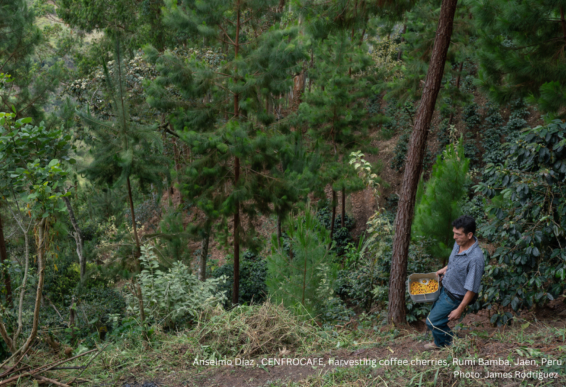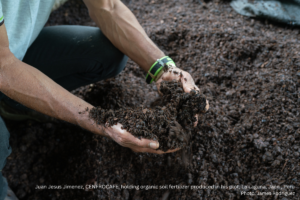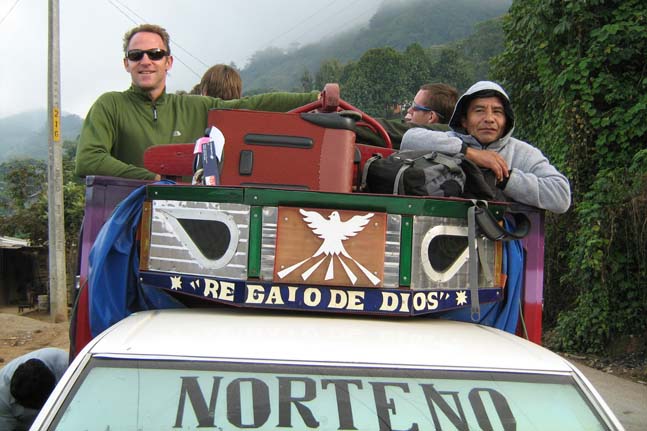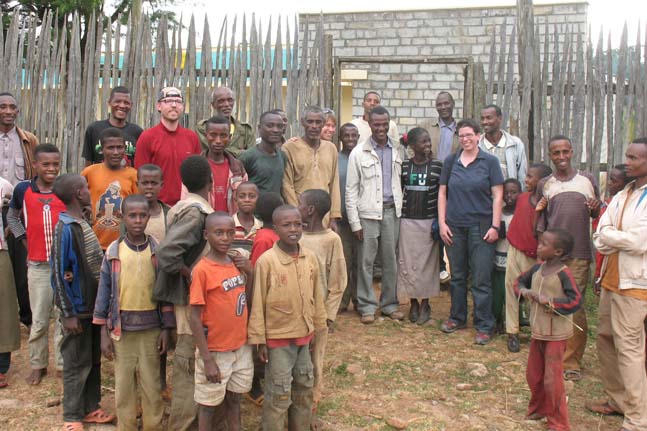
At Cooperative Coffees, we’ve always believed in the power of small-scale, organic agroforestry to contribute to climate stabilization and increased resilience. In our conversations and visits with producer partners over the years, we’ve seen that producers’ work to plant and conserve shade trees, apply homemade organic compost, and adopt other regenerative practices can increase soil health and carbon sequestration; improve on-farm biodiversity; and boost farm yields, quality, and ultimately profitability – at once supporting farmer livelihoods and resilience, while also mitigating climate change.
But until recently, we and others in the coffee industry lacked reliable data on the magnitude of regenerative organic agroforestry’s carbon benefits. Carbon footprints for coffee farms existed, but, due to methodological limitations, they largely did not account for carbon removals associated with coffee production and did not reflect farmer management decisions. As a result, World Coffee Research concluded that “we should consider that there are no accurate estimates of coffee’s carbon footprint.”
Our collaboration with The Chain Collaborative, the Cool Farm Alliance, the Inter-American Development Bank, Root Capital, and the Sustainable Food Lab sought to gather the data to achieve a more accurate carbon accounting for coffee farms – particularly for the smallholder farms in our supply chain. After three years of working with our cooperative partners--COMSA, CENFROCAFE, Sol y Café, Manos Campesinas, Norandino, and CAC Pangoa–to collect, verify, and analyze carbon footprint data from over 250 farmers managing 370 coffee parcels, we are now pleased to share what we are learning.

- Organic agroforestry farming is an important nature-based climate solution, and can operate at carbon-neutral or even carbon-negative rates – meaning farm emissions and removals are balanced (carbon neutral), or farms actually remove more carbon each year than they emit (carbon negative).
- Among the 370 farm parcels assessed (representing 253 farmers), 62% were carbon negative, with a median carbon footprint of negative 3.7 kilograms of carbon dioxide equivalent (CO2e) per kilogram of green bean equivalent (GBE) coffee produced. Another 20% operated near carbon neutral, generating less than 1 kilogram CO2e per kilogram of coffee GBE. Across the sample, we saw median carbon emissions of negative 1.2 kg CO2e per kilogram of coffee.
 Includes emissions associated with land use change. Extreme high and low values (31 farms) were removed from this graph for visual clarity.
Includes emissions associated with land use change. Extreme high and low values (31 farms) were removed from this graph for visual clarity.
- Performance varied across the six cooperatives due to variations in context and practices (see below for details), ranging from one cooperative reporting 100% of farms as carbon negative to another reporting 30%. Overall, five of the six cooperatives reported at least 50% of evaluated parcels as carbon negative.
- Key drivers of removals were application of organic fertilizer and chipped tree pruning residue, while the most significant driver of emissions was land use change, especially forest conversion or degradation.

Emissions associated with land use change were removed from this graph for visual clarity.
- Carbon sequestration was primarily the result of a) the production and application of organic fertilizer, particularly compost generated from on-farm materials; b) the incorporation of pruned tree material (“residue” in the graph above) into the soil as mulch; and c) the planting of shade trees.
- Notably, data collected focused only on coffee production areas, excluding conservation or reforestation areas beyond the coffee farm. The results, therefore, do not reflect the total environmental value provided by each farmer’s collective land holdings.
- Notably, data collected focused only on coffee production areas, excluding conservation or reforestation areas beyond the coffee farm. The results, therefore, do not reflect the total environmental value provided by each farmer’s collective land holdings.
- Emissions primarily came from a) land use change, if any occurred in the last twenty years; b) disposal of pruned shade tree residue via both burning and composting; and c) application of fertilizers (even organic fertilizers generate some emissions during production and application). Outside of land use change, emissions in other categories were generally small–certainly smaller than when agrochemical fertilizers and pesticides are used, especially when transported long distances.
- In many cases, if farmers reported historic forest conversion, the resulting carbon emissions were significant. Within this sample, the drivers of land use change were largely outside farmers’ control. The Food and Agriculture Organization considers that some land use change is not driven by agricultural demand, which raises important questions around fair compensation for farmers.
- Land use change can have a positive environmental impact when transitioning from monoculture and conventional farming to organic agroforestry. The cooperatives in our project are pioneers in this production model, and regularly share their knowledge and experience with anyone interested in learning about these practices.
- As noted above, several farm activities can result in both carbon emissions and removals, with the net result depending on the context and specific practices used. Two examples are organic fertilization and tree pruning. The production of organic compost, for example, generates emissions, which are then partially or fully offset when the compost is incorporated into the soil. We were particularly surprised to see the different footprints associated with tree pruning practices. For example, chipping pruned materials led to a jump in sequestration, while burning led to a similar jump in emissions.
These results demonstrate the power of organic agroforestry to sequester carbon and fight climate change. Of course, our supply partners have been champions of nature-based solutions to climate change before that term existed, and before carbon was consistently part of the conversation. As a network of buyers, Coop Coffees wants to reward these farmers and cooperatives for their work to date, and provide new resources to increase climate resilience.

In addition, 87% of the world’s approximately 570 million farms are smallholdings of around two hectares, occupying 24% of all agricultural land. Their footprint is minuscule relative to industrialized, high-intensity farming. For these reasons, we believe supporting smallholder, organic agroforestry is key to the long term sustainability of our food supply chains and a critical solution to our planet’s changing climate.
We are now taking project learnings and turning them into a compensation model to support this production model and the many benefits associated, from environmental conservation to socioeconomic justice. Please stay tuned for details in our next blog.
Melissa Wilson Becerril, Impact Manager, Cooperative Coffees
Elizabeth Teague, Director, Climate Resilience Initiative, Root Capital
Contributors:
Nora Burkey, Executive Director, The Chain Collaborative
Juana Muñoz, Agronomic & Climate Resilience Advisory Manager, Root Capital
Patrick Lawrence, Data Analyst, Sustainable Food Lab
Daniella Malin, Senior Program Director, Agriculture & Climate, Sustainable Food Lab
March 21, 2023























